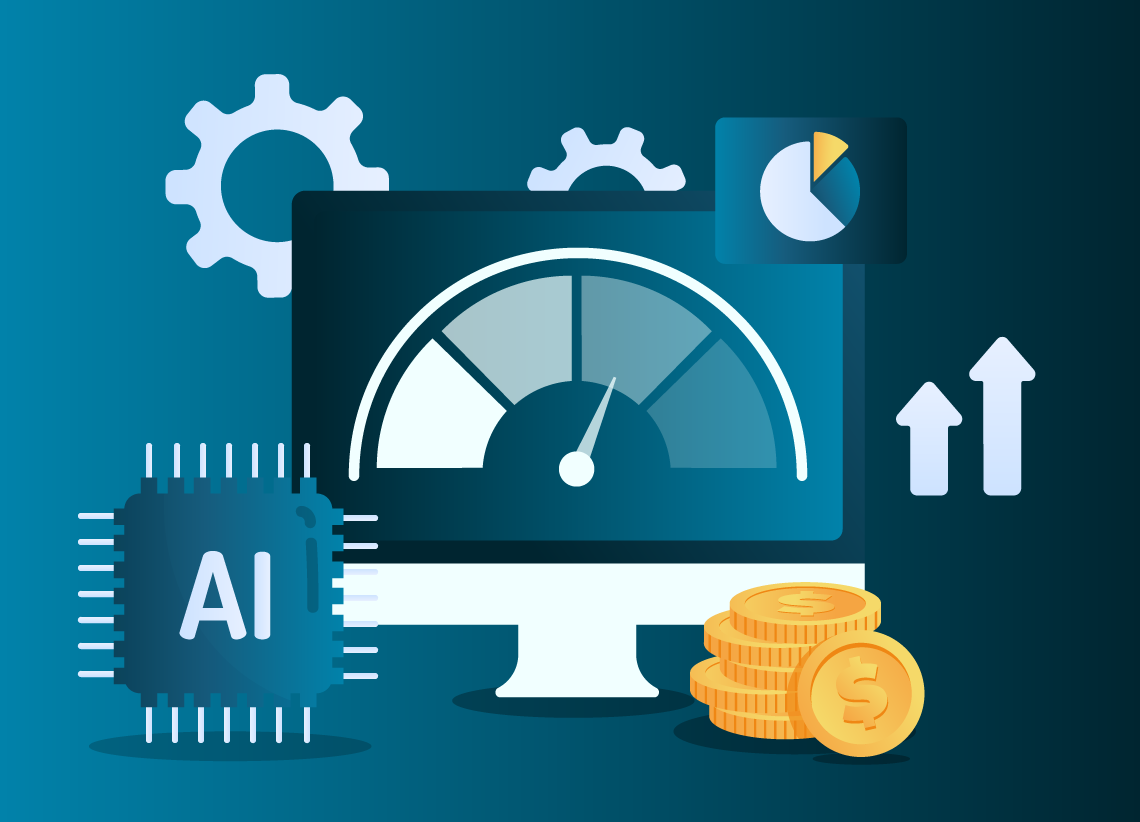AI-Driven Credit Risk Assessment: Improving Lending Decisions
 Lakshminarayana Reddy Kothapali Sondinti
Lakshminarayana Reddy Kothapali Sondinti
Introduction
In the financial industry, credit risk assessment plays a vital role in determining an individual's or organization's creditworthiness. Traditional credit risk models rely heavily on historical financial data and predefined scoring systems. While effective, these models often lack the flexibility to predict risks in volatile or fast-changing markets. Artificial Intelligence (AI) has emerged as a powerful tool to enhance credit risk assessment by analyzing complex data patterns, improving decision-making, and enabling more personalized lending strategies. This paper explores how AI optimizes credit risk assessment, the key technologies involved, and the benefits and challenges it introduces.
The Role of AI in Credit Risk Assessment
AI enhances credit risk assessment by leveraging data-driven techniques such as machine learning (ML), deep learning, and natural language processing (NLP). These approaches allow financial institutions to predict default risks more accurately and efficiently. By analyzing large datasets, AI models can identify subtle behavioral patterns, financial trends, and risk factors that traditional models may overlook.
Key AI Techniques for Credit Risk Assessment
Supervised Learning Models
- Supervised learning algorithms, such as logistic regression, decision trees, and random forests, use labeled data to predict whether a borrower is likely to default. These models are widely adopted for their interpretability and effectiveness in identifying high-risk profiles.
Unsupervised Learning Models
- Unsupervised learning models, such as clustering algorithms and anomaly detection, identify unusual borrower behavior patterns that may indicate higher credit risk.
Deep Learning Models
- Deep neural networks excel in capturing non-linear relationships within complex financial data. These models analyze extensive datasets, enabling better prediction accuracy for dynamic credit environments.
Natural Language Processing (NLP)
- NLP techniques extract insights from unstructured data sources such as social media, news articles, and customer reviews. These insights improve risk assessments by identifying emerging trends and behavioral patterns.
Mathematical Models in AI-Based Credit Risk Assessment
AI models often rely on specific mathematical frameworks to enhance prediction accuracy. Some key models include:
Logistic Regression
- A popular method for binary classification problems like credit default prediction. It models the probability of a borrower defaulting based on various financial factors.
Equation:
y = β0 + β1x1 + β2x2 + ... + βnxn
Where:
\= Probability of default
\= Financial features such as income, credit score, etc.
\= Regression coefficients
Decision Trees and Random Forests
- Decision trees split data based on key financial indicators, while random forests combine multiple trees to improve prediction robustness.
Gini Index for Node Splitting:
gini = 1 - ∑ p_i^2
Where:
- \= Probability of class in a given node
XGBoost (Extreme Gradient Boosting)
- This powerful ML technique combines multiple weak learners to improve credit risk prediction accuracy, particularly in complex datasets.
Benefits of AI in Credit Risk Assessment
AI-driven credit risk assessment offers several advantages that enhance financial institutions' lending processes:
Improved Accuracy:
- AI models outperform traditional methods by identifying hidden patterns and complex relationships within financial data.
Faster Decision-Making:
- Automated AI models reduce manual assessments, allowing lenders to make faster lending decisions.
Dynamic Risk Analysis:
- AI models update predictions in real-time based on new borrower data, improving the adaptability of risk assessments.
Enhanced Fraud Detection:
- AI's anomaly detection capabilities effectively identify suspicious behavior patterns, minimizing lending risks.
Increased Financial Inclusion:
- AI models leverage alternative data sources, such as utility payments and online activity, to assess creditworthiness for individuals with limited credit history.

Challenges in AI-Based Credit Risk Assessment
Despite its benefits, AI-driven credit risk assessment introduces several challenges:
Data Privacy and Security:
- Financial data is sensitive and must be handled securely to ensure compliance with data protection laws.
Model Transparency:
- Complex AI models, such as deep learning, often lack transparency, making it difficult for lenders and regulators to interpret their decisions.
Bias and Fairness:
- If training data is biased, AI models may perpetuate discriminatory lending practices. Implementing bias mitigation techniques is crucial.
Regulatory Compliance:
- Financial institutions must align AI models with legal standards, such as the Fair Credit Reporting Act (FCRA) and Basel III regulations.
Future Directions for AI in Credit Risk Assessment
To maximize the benefits of AI in credit risk assessment, the following advancements are expected:
Explainable AI (XAI):
- Developing transparent AI models that provide clear explanations for their decisions will enhance trust and regulatory compliance.
Federated Learning:
- This emerging technique enables multiple financial institutions to collaborate on training models without sharing sensitive data, improving prediction accuracy while preserving privacy.
Hybrid AI Models:
- Combining AI techniques with traditional financial risk models will improve stability and prediction accuracy.
Advanced NLP Tools:
Enhanced NLP models will extract deeper insights from financial news, social media, and customer interactions, further improving risk assessment.

Conclusion
AI-driven credit risk assessment is revolutionizing the lending landscape by improving accuracy, efficiency, and decision-making. By leveraging advanced techniques such as machine learning, deep learning, and NLP, financial institutions can predict credit risks more effectively. Despite challenges in data privacy, model transparency, and bias management, innovations such as Explainable AI and federated learning are paving the way for more ethical and effective credit risk assessment systems. As AI continues to evolve, it promises to drive smarter lending decisions and foster financial inclusion in global markets.
Subscribe to my newsletter
Read articles from Lakshminarayana Reddy Kothapali Sondinti directly inside your inbox. Subscribe to the newsletter, and don't miss out.
Written by
